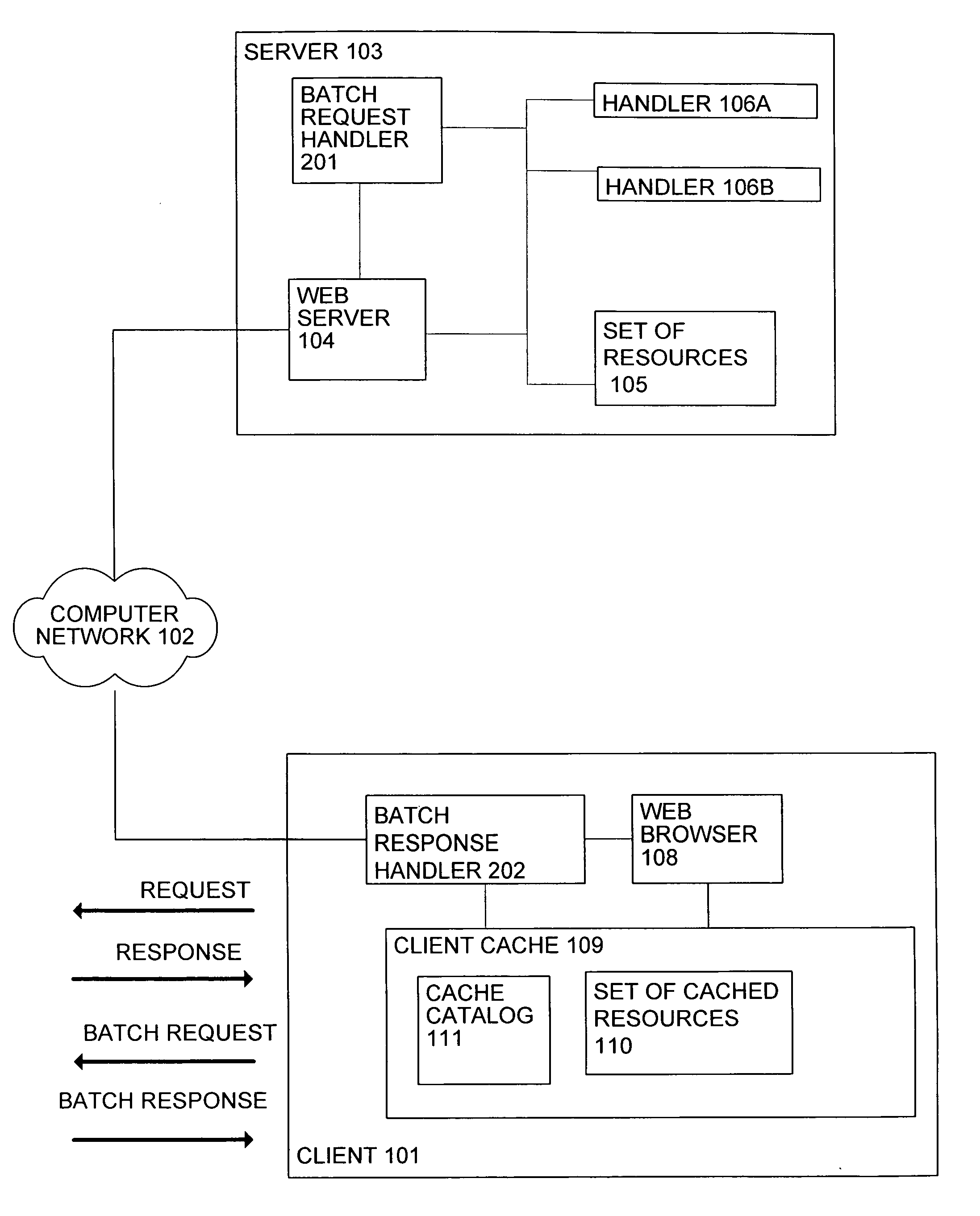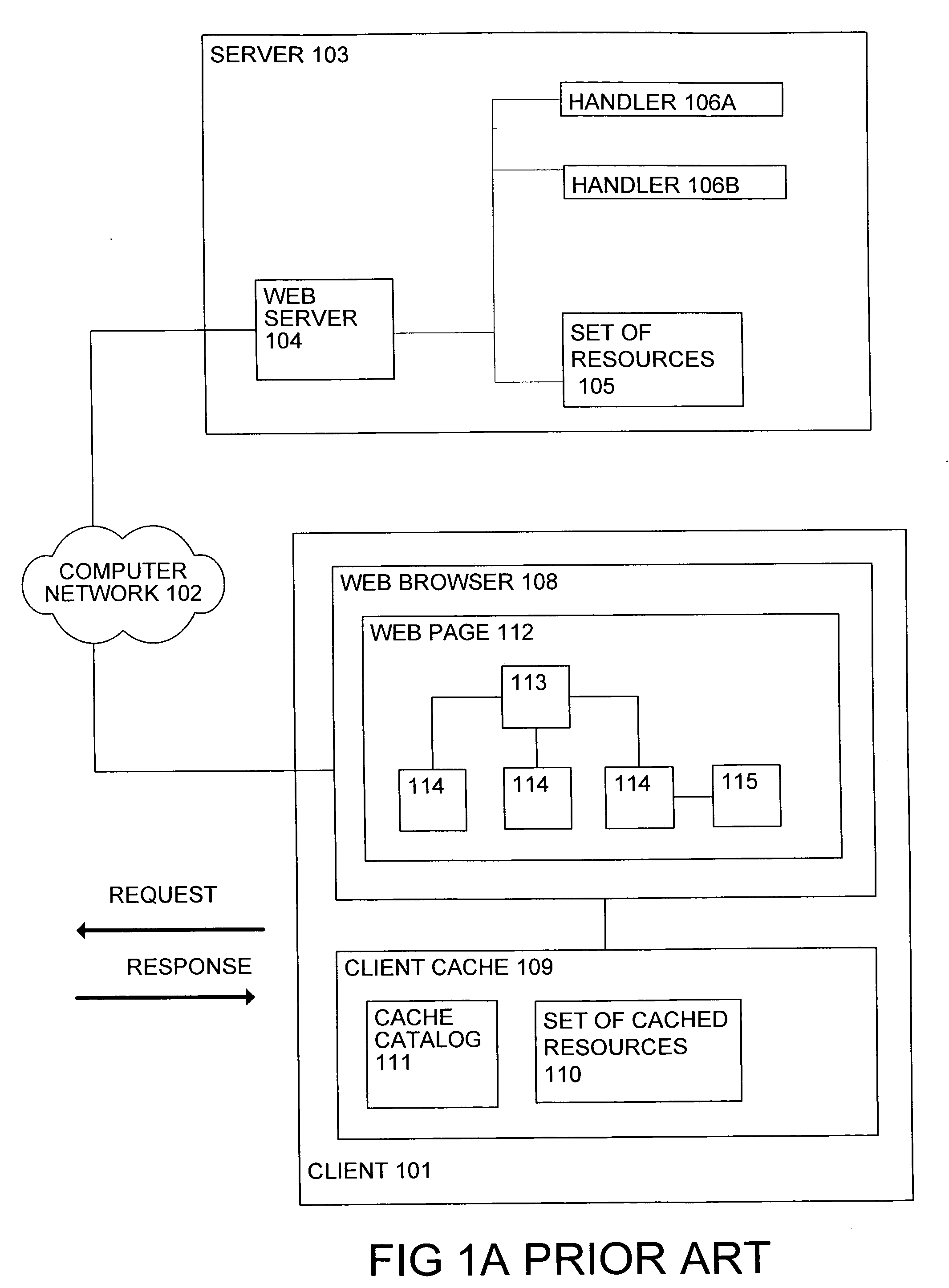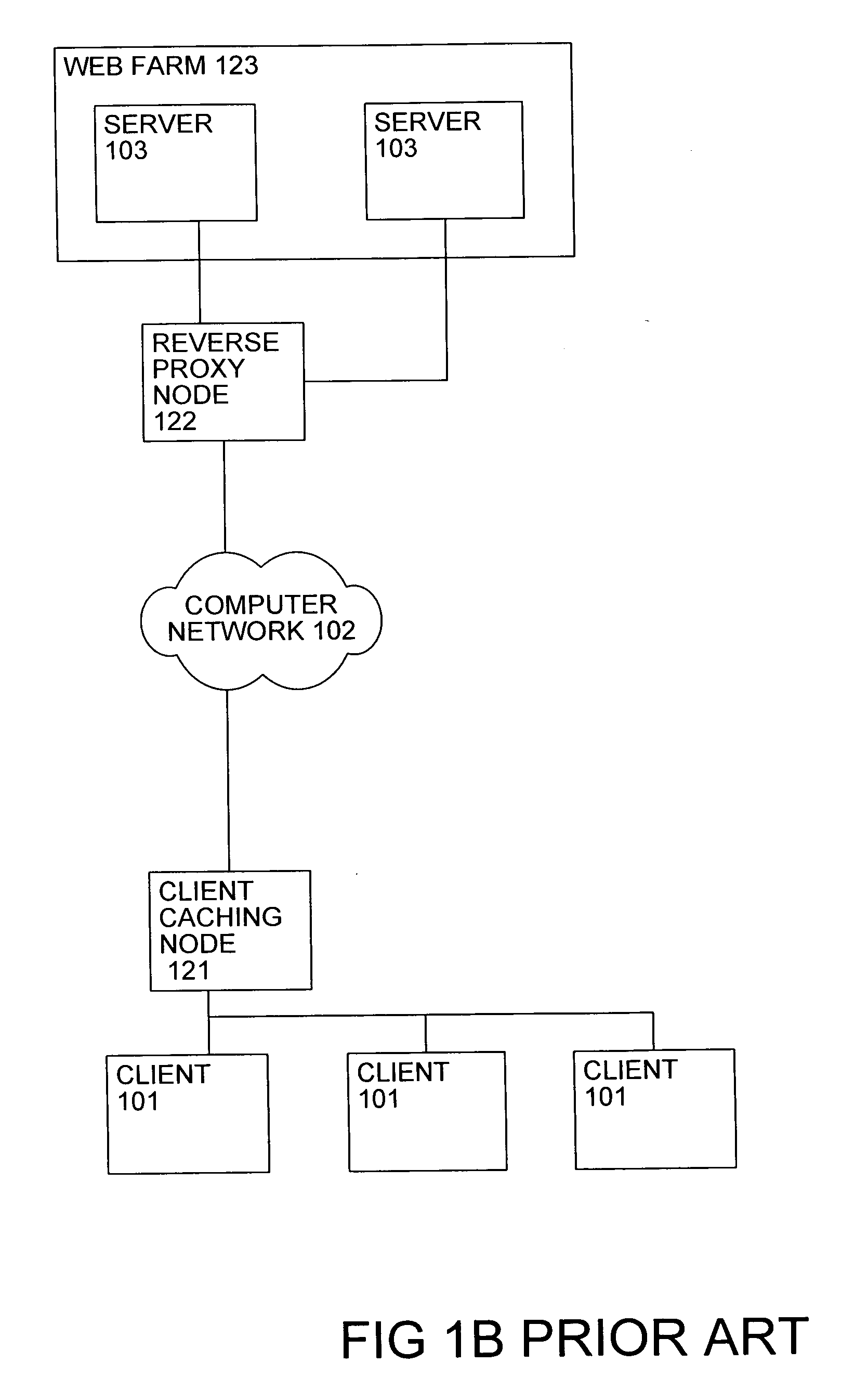Method and system for reducing web page download time
a web page and download time technology, applied in the field of systems and methods for increasing performance, can solve the problems of increasing unrealized online purchases, reducing user experience, and even missing some business goals, so as to improve user experience, and reduce the number of network roundtrips
- Summary
- Abstract
- Description
- Claims
- Application Information
AI Technical Summary
Benefits of technology
Problems solved by technology
Method used
Image
Examples
Embodiment Construction
[0051]FIG. 1A shows a diagram of web application in prior art. A client computing device (client) 101 is communicatively connected via a computer network 102 to a server 103. Examples of client computing device include a desktop computer, notebook computer, PDA, smartphone and other devices that have at least one processing unit, system memory, and mass storage device such as hard drive, CD or DVD module or non-volatile memory card. The computer network can be the Internet, intranets, extranets, LAN, WAN, wireless network, wireless wide area network (WWAN) or some combination thereof. Server 103 has one or more processing units, system memory, one or more network adapters and mass storage devices, such as hard drives, CD or DVD module or non-volatile memory cards (not shown). Server 103 hosts web server 104 that receives HTTP requests (shown as REQUEST) from the client 101 and sends back HTTP responses (shown as RESPONSE). Although the HTTP protocol is described with reference to se...
PUM
 Login to View More
Login to View More Abstract
Description
Claims
Application Information
 Login to View More
Login to View More - R&D
- Intellectual Property
- Life Sciences
- Materials
- Tech Scout
- Unparalleled Data Quality
- Higher Quality Content
- 60% Fewer Hallucinations
Browse by: Latest US Patents, China's latest patents, Technical Efficacy Thesaurus, Application Domain, Technology Topic, Popular Technical Reports.
© 2025 PatSnap. All rights reserved.Legal|Privacy policy|Modern Slavery Act Transparency Statement|Sitemap|About US| Contact US: help@patsnap.com



